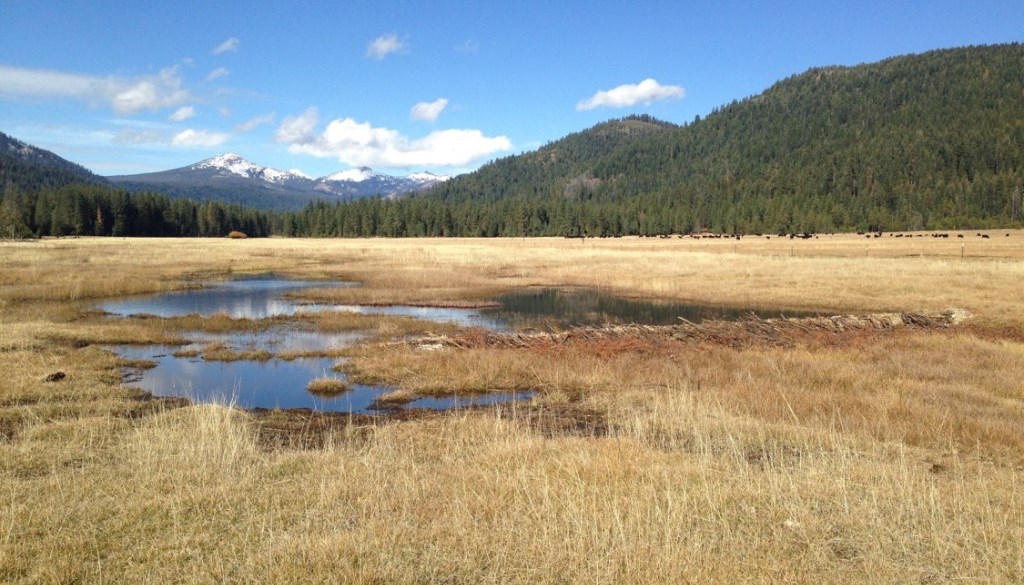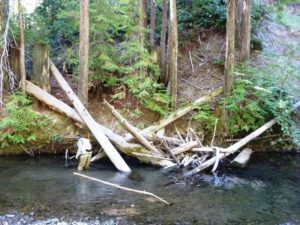On December 11, 2019, the California Department of Fish and Wildlife (CDFW) announced the selection of 31 projects that will receive funding for the restoration, enhancement and protection of anadromous salmonid habitat in California watersheds, as well as for forest legacy restoration.
The grants, which total $10.1 million, are distributed through CDFW’s Fisheries Restoration Grant Program (FRGP).
“We are excited to further the restoration of river ecosystems critical to California’s salmon and steelhead,” CDFW Director Charlton H. Bonham said.
“Several of this year’s projects incorporate process-based restoration to address the root of ecological degradation and benefits all species using the waterway, including salmonids,” he added.
They include $256,440 allocated for timber legacy restoration projects and approximately $9.8 million for anadromous salmonid restoration projects.
FRGP monies come from a combination of state sources and the federal Pacific Coastal Salmon Recovery Fund.
In response to the 2019 Fisheries Habitat Restoration Grant Solicitation, CDFW received 70 proposals requesting more than $38 million in funding. All proposals underwent an initial administrative review. Those that passed were then evaluated through a technical review process that included reviews by CDFW and National Oceanic and Atmospheric Administration (NOAA) scientists.
The 31 approved projects will further the objectives of state and federal fisheries recovery plans, including removing barriers to fish migration, restoring riparian habitat, monitoring of listed populations and creating a more resilient and sustainably managed water resources system (e.g., water supply, water quality and habitat) that can better withstand drought conditions.
These projects further the goals of California’s Water Action Plan and CDFW’s State Wildlife Action Plan, as well as addressing limiting factors specified in state and federal recovery plans.
See the 31 salmon restoration projects that were funded.
The day before, on December 10, 2019, CDFW also announced the selection of seven projects to restore wetlands that will reduce the emission of greenhouse gases (GHGs) and provide other ecological co-benefits.
The awards, totaling $11.35 million, were made under CDFW’s 2019 Wetlands Restoration for Greenhouse Gas Reduction Program Proposal Solicitation Notice. The seven projects will restore or enhance approximately 1,700 acres of wetlands and mountain meadows and sequester an estimated 67,400 metric tons of carbon dioxide (MTC02e).
The Wetlands Restoration for Greenhouse Gas Reduction Program focuses on projects with measurable objectives that will lead to GHG reductions in wetlands and watersheds while providing co-benefits such as enhancing fish and wildlife habitat, protecting and improving water quality and quantity and helping California adapt to climate change. Wetlands have high carbon sequestration rates that can store carbon for decades.
“These projects will significantly benefit climate science and ecosystems representing the coast, the Central Valley and the Sierra Nevada,” said Bonham. “We are excited to continue the momentum to restore California’s wetlands while making a demonstrable impact to greenhouse gases.”
To improve efficiency and alignment with program priorities, a new two-phase application process involving a pre-application and final application was implemented for 2019 solicitation.
These Wetlands Restoration for Greenhouse Gas Reduction were funded:
- The Light-handed Meadow Restoration in Faith Valley and Log Meadow ($475,675 to American Rivers) will restore and protect 138 acres of mountain meadow at two high-priority sites, Faith Valley in the Humboldt-Toiyabe National Forest and Log Meadow in Sequoia National Park. The project will have an estimated GHG benefit of 7,644 MTCO2e.
- The Hill Slough Restoration Project ($5,577,413 to Ducks Unlimited, Inc.) will restore 603 acres of managed seasonal wetland to tidal wetland and restore 46 acres of existing upland to tidal wetland in the Suisun Marsh. The project will have an estimated GHG benefit of 25,242 MTCO2e.
- The City of Newman Inland Wetland Restoration Project ($610,000 to the City of Newman) will restore a 10-acre parcel of land owned by the City of Newman, Merced County. The project will provide multiple environmental, economic and public benefits and will have an estimated GHG benefit of 78 MTCO2e.
- The White Slough Tidal Wetlands Restoration Project ($852,113 to the California State Coastal Conservancy) will restore 40 acres of coastal tidal wetlands on diked historic tidelands in the White Slough Unit of Humboldt Bay National Wildlife Refuge in Humboldt County. The project will have an estimated GHG benefit of 17,073 MTCO2e.
- The Upper Truckee River and Marsh Restoration Project ($895,000 to the California Tahoe Conservancy) will restore 13 acres of wetlands in the Upper Truckee River in El Dorado County by grading back to historic topography, removing invasive species and revegetation. The project will have an estimated GHG benefit of 6,545 MTCO2e.
- The Lower Walnut Creek Restoration Project ($950,000 to Contra Costa County Flood Control and Water Conservation District) will restore and enhance approximately 183 acres of tidal wetlands and tidal channel, 17 acres of non-tidal pickleweed marsh and 36 acres of adjacent lowland terrestrial ecotones, and create and enhance approximately 60 acres of uplands. The project will have an estimated GHG benefit of 5,690 MTCO2e.
- The Ocean Ranch Restoration Project ($1,998,282 to the California State Coastal Conservancy) will restore the natural tidal prism and improve connectivity of tidal and freshwater habitats within 571 acres of Ocean Ranch in Humboldt County. The ORRP will have an estimated GHG benefit of 5,223 MTCO2e.
CDFW’s Wetlands Restoration for Greenhouse Gas Reduction Program is part of California Climate Investments (CCI), a statewide program that puts billions of cap-and-trade dollars to work reducing GHG emissions, strengthening the economy, and improving public health and the environment – particularly in disadvantaged communities.
The cap-and-trade program also creates a financial incentive for industries to invest in clean technologies and develop innovative ways to reduce pollution. CCI projects include affordable housing, renewable energy, public transportation, zero-emission vehicles, environmental restoration, more sustainable agriculture, recycling, and much more.
Featured photo of Child’s Meadow courtesy of CDFW.
Learn more about CDFW’s Wetlands Restoration for Greenhouse Gas Reduction Program.


